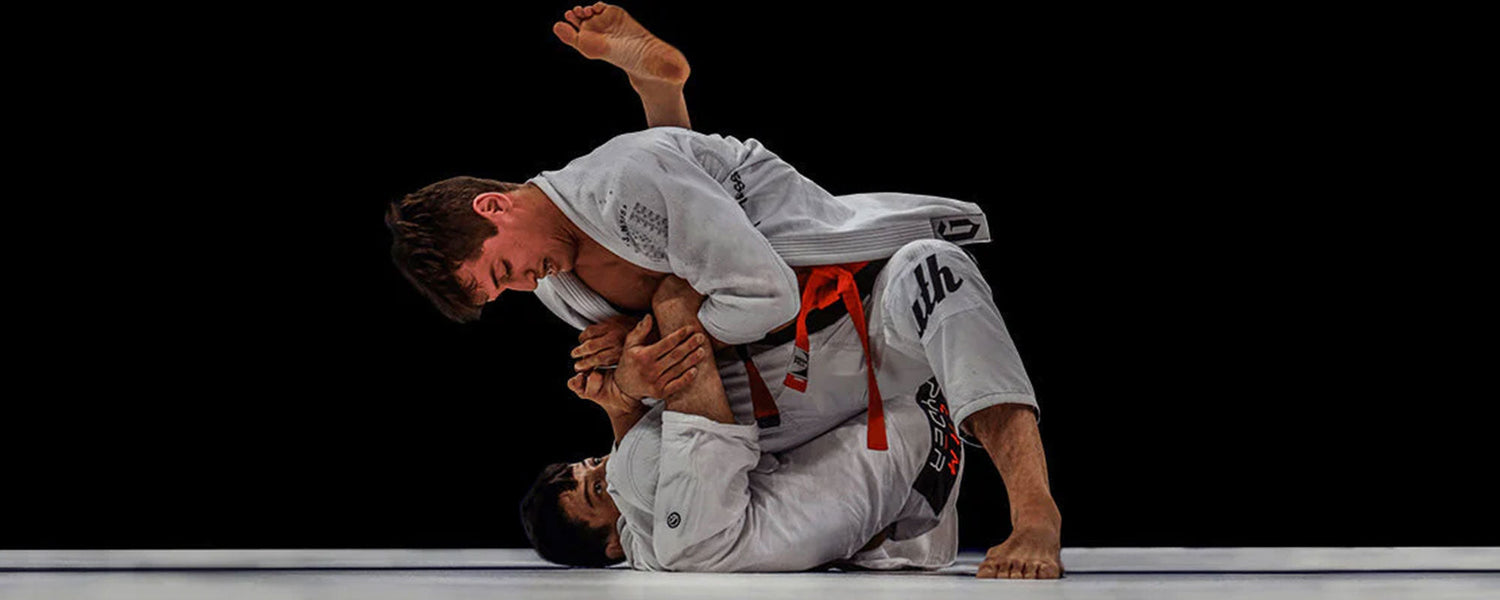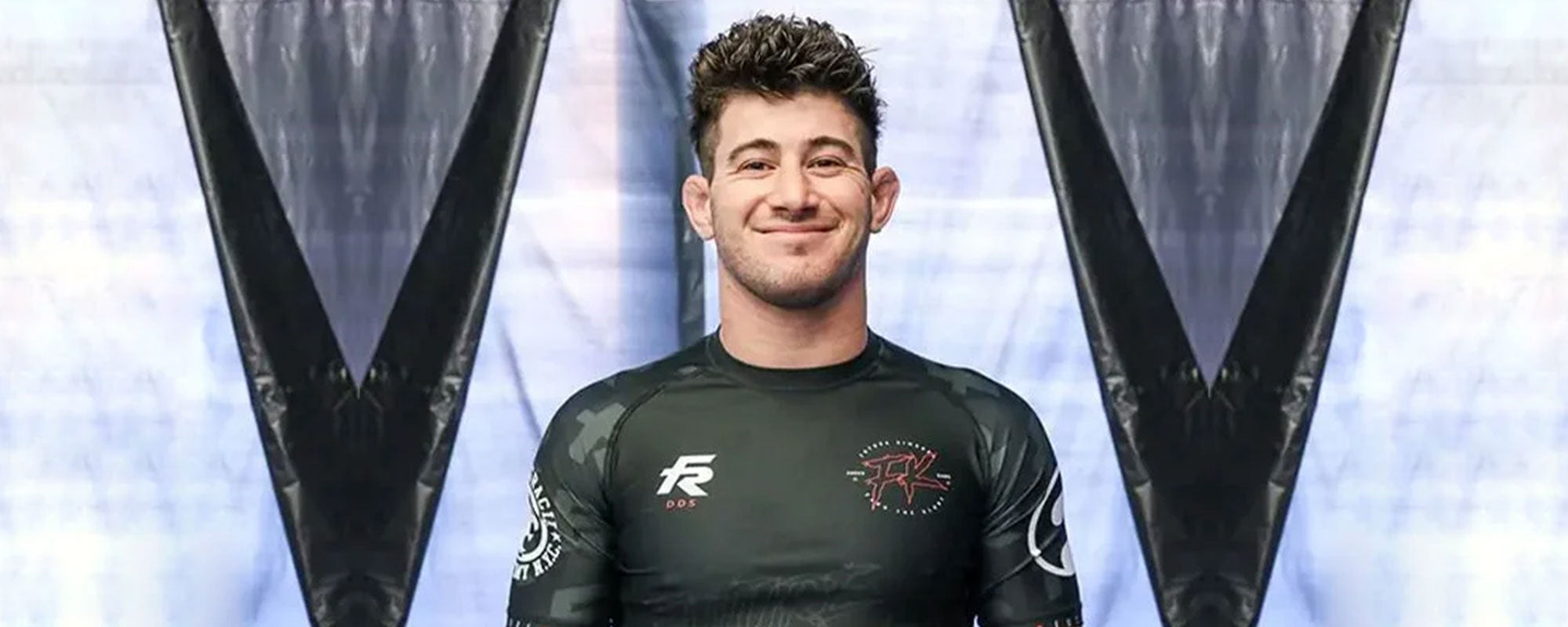Table of content
1. What is the Estima Lock?
The Estima Lock is a powerful technique used in Brazilian Jiu-Jitsu that is quick and easy to learn. For this technique, the foot of the person guarding is lassoed and the position is tightened in the shape of a rear-naked choke shortly after the first movement is completed. It was invented by Brazilian Jiu-Jitsu’s most famous brothers, Victor and Braulio Estima, and is frequently utilized when one’s opponent attempts to sweep or seize the back of the opponent.
While the Estima Lock can be initiated from a variety of places, it is almost always initiated from the top position of the keyhole form. This is due to the fact that the attacker can attempt the submission hold with only a slight chance of being swept.
2. The History of the Estima Lock in BJJ
It is believed that in the late 2000s, the Estima Lock was developed as a result of sparring sessions between the Estima brothers in preparation for the ADCC 2009, which Braulio was scheduled to compete in.
Victor was having difficulty with his brother’s inverted guard, causing him to devote his attention on his brother’s foot. In fact, he admitted to BJJ Heroes that “Before the Rio Open 2009, I didn’t really believe in footlocks, it wasn’t until after the Rio Open, when I was submitted by Ralph Abi Rihan with a footlock that I began to use them in my training sessions.”
Brauilo was tapped by Victor with a foot-lock during one of their rolls. Victor did this by snagging his brother’s foot and getting it hooked close to his stomach, where he then applied pressure from there. This was all done on the spur of the moment during the training but it captured the attention of both brothers.
The two of them got to work on it right away adding various details and incorporating it in their game.
At the ADCC 2009, Braulio came out on top after effectively employing their newly devised position against Rafael Lovato Jr. in order to win the event. This demonstrated that the position was effective at the highest level of grappling.
However, despite the fact that the position had been used on a few occasions, it wasn’t until the World No-Gi Jiu-Jitsu Championship in 2011 that it gained widespread attention, thanks to Victor’s incredible performance. The Brazilian submitted all of his opponents with the same hold on his way to his first world title as a black belt.
3. How does it work?
The Estima Lock is a foot lock that is both swift and painful. The basic posture is taking the opponent’s foot onto your stomach. It can make its way through an open guard.
This is extremely advantageous to the passer since it provides an opportunity to attempt a submission with virtually little risk. Even if the chance of a successful submission is extremely low, this is a fantastic trade-off for not having to take any risks.
When moving through an open guard, the opponent’s legs should be active to avoid being caught.
The opponent becomes vulnerable to an Estima lock if he/she tries to flex their foot inwards.
The Estima lock can be entered from a variety of guard positions such as the X-Guard and the single leg X.
From a knee shield half guard position, a comparable entry can be attempted.
If the top player is positioned far enough back inside the opponent’s leg entanglement, they may be able to gain access to the top foot of the opponent.
A close contact half guard will make this impossible if it is being executed in close quarters.
4. Mechanism of The Estima Lock
4.1. Hand Positioning
- The Estima lock has a similar grasp to a rear-naked choke.
- You should come from the back of your opponent’s foot near the Achilles heel. Place your hand on the outside (crook) of your elbow.
- Your top arm must then cross your body and be placed on your opponent’s shin.
- This will give you a good hold over the leg of your opponent and keep their foot adhered to your stomach.
4.2. Body Positioning
- When the foot of your opponent is under your control, pull it inwards to your stomach.
- This will help you maintain control and decrease the chance of your opponent escaping.
- At this time, rotate your body towards the ankle of your opponent.
- You will be moving your body and chest to finish the Estima lock
4.3. Finishing
As soon as you get control of your opponent’s movements, rush rapidly towards their body.
This will bend their knee inwards to their chest and lower their chances of escaping.
5. How to Perform Estima Lock in Brazilian Jiu-Jitsu
- To perform this hold, you must grab your opponent's foot when it is on your stomach.
- If your opponent’s foot is pushing against your hip for any reason, your immediate reaction should be to seize it with your arms.
- A rear-naked choke on the foot is the best way to grab hold. You will have everything you need to accomplish the Estima Lock when you make this move.
- Even though the foot is extremely vulnerable when performing this move, that doesn’t imply you should be careless with it.
- Elevate your outside elbow while pressing down on the foot with your stomach. At the same time, you must pull with your arm without moving your whole body.
- This is the primary reason why the 50/50 reverse De La Riva and top half-guard positions are so effective when using this technique.
- Your upper and lower body should be absolutely immobile while using the Estima lock; it will almost certainly result in a tap if done correctly.
5.1. Common mistakes that must be avoided
There are numerous ways to make a mistake when performing this move. The most common mistake Brazilian Jiu-Jitsu practitioners make is attempting to “yank” the opponent’s foot out. They attempt to raise it, which results in a failed execution of the technique.
6. Use of Estima Lock in Jiu-Jitsu Sport
6.1. Estima Lock against Reverse DLR
One position in which an opportunity for an Estima lock may present itself is when your opponent is using a reverse De La Riva guard
How to Perform
- For these techniques, your opponent will frequently place their foot on your hip during the fight.
- Essentially, you are given the opportunity to attempt the Estima lock.
- When they do this to you while you’re standing, hook your legs under their legs and crunch your stomach down.
- While their leg is trapped, tighten your grip on them and raise the opponent’s elbow.
6.2. Estima Lock Against In and Out Technique
Knowing how to perform the in and out pass will allow you to obtain a very tight Estima lock in a single attempt.
How to Perform
- Begin by looping your arm around your opponent's ankle and grabbing their belt or pants with your other hand.
- Once you have gained control, you can quickly jump to the side and continue driving forward.
- When you drive forward, the leg of your opponent is pressed into your midsection.
- You have two options, either lock your grip and finish from there or raise your arms and apply pressure.
6.3. Estima Lock from the 50/50 Position
While you are in a 50/50 position with your opponent, set up your foot on the mat, and drive your knee down.
How to Perform
You might start by rising up to give the impression that you are about to attempt a guard pass on your opponent’s team. For this approach, the Estima lock will appear to be deceiving.
- Consequently when you get up, your opponent's foot will be on your hip as you do so.
As an example, let’s say he has his left foot on your hip. In this position, you will be able to begin attempting the foot lock.
- Using the arm on the same side as your opponent’s foot, lay it on your hip and push your opponent’s toes into your stomach, slightly crunching forward to secure his foot’s position.
- Then, starting with your right arm, begin to lock up a rear-naked choke on his Achilles heel and foot with your left arm.
- Complete the rear naked choke (RNC) grasp on the foot to its full extent.
- Take advantage of the leg that is not wrapped in the 50/50 position to move closer to your opponent.
- Use your grasp on the foot to squeeze and compress it.
6.4. Estima Lock Against Lasso Guard
The Estima lock is an excellent way to counter an opponent who is attempting a Lasso guard
How to Perform
- When they attempt to loop their leg inside your arm, close your elbow to prevent the Lasso from being executed
- When you do this, it places their foot between you and them but it is unlikely that this will be enough give to convince them to surrender to you their foot.
- The fake knee slice pass will increase your chances of achieving the submission in this situation
- Seize their lapel and drive your knee across their leg, applying as much pressure as possible.
- This will make your opponent feel uncomfortable, prompting him or her to defend by kicking you away.
- This is the time to really trap their feet once they attempt to push you away.
- To force them to submit, lock their foot to your body, fall back and turn their heel up to the side
7. Securing the Estima Lock
The Estima lock can be really hard to defend but you need to know when it is being executed . The Estima lock is a very fast technique that requires attentivenss and quick reaction speed.
7.1. How to Defend the Technique
- Once your opponent gets ready for the footlock
- Start spinning inward
- Spin out of danger quickly and execute your counterattack.
7.2. Is Estima Lock Legal for Everyone ?
In IBJJF, the Estima lock is only legal for brown and black belts. It is illegal for white, purple, and blue belts.
7.3. Tips for Performing the Estima Lock
- Never chase the foot in order to obtain the Estima lock, let your opponent put their feet in front of you.
- It is necessary to trap your opponent’s foot on or around your midriff to successfully complete the trap.
- Keep your grip tight to prevent your opponent’s foot from slipping out from underneath you.
- To resist the Estima lock, your opponent will make an attempt to turn out of the position. Put your foot on their hip to prevent them from turning and keep the pressure on them until they are stopped.
- If their foot is not caught properly, you will not be able to force them to submit.
7.4. How Dangerous is the Estima Lock?
The Estima lock is one of the most destructive leg locks in Brazilian Jiu-Jitsu and one of the most difficult techniques to defend against.
It used to be acceptable at all belt levels until a few years ago but is now banned for junior belts due to the risk of potential injuries.
7.5. Placido Santos Estima Lock Injury
Placido Santos, a purple belt at the time, participated in the Enigma Jiu-Jitsu Academy Invitational II Tournament. The event included plenty of talented newcomers who competed in a variety of fights, ranging from combat jiu-jitsu to 15-minute sub-only EBI rules battles.
Placido was considered one of the favorites and made it to the finals. He faced a brown belt Cavlin Tacey, supposedly a highly efficient leg locker.
Placido was caught exceptionally fast and barely had any time to tap. The reason why the Estima lock is so dangerous is because if done right, it barely gives time for the opponent to tap.
Calvin performed the Estima lock perfectly, resulting in Placido’s ankle being fractured within a few seconds.
7.6. Noteable Estima Lock Executions
Take a look at how high level competitors execute Estima lock in BJJ competitions
- ADCC Submission Fighting World Championship 2009
Braulio Estima vs. Rafae Lovato Jr
Estima Lock executed within six seconds.
- 2012 Open Championship (British Open)
Clark Gracie vs. Victor Estima
Estima Lock executed within three minutes and 10 seconds.
- 2013 Abu Dhabi World Pro Jiu-Jitsu Championship
Alan do Nascimento vs. Victor Estima
Estima Lock executed within two minutes and 34 seconds.
- 2015 Pan American Championship
Daniel Almodovar vs. Edwin Najmi
Estima Lock executed within 25 seconds.
- 2015 IBJJF European Championship
Unidentified Fighters
Estima Lock executed within 45 seconds.
Photo Credit: @attacktheback













Leave a comment
This site is protected by hCaptcha and the hCaptcha Privacy Policy and Terms of Service apply.